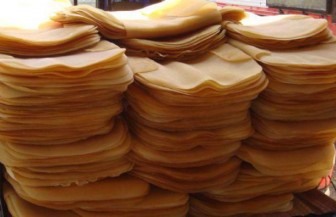Japanese rubber futures inched higher on Tuesday, buoyed by firmer synthetic rubber prices and global supply concerns, although a stronger yen and softer oil prices capped gains.
The Osaka Exchange (OSE) rubber contract for January delivery was up 0.7 yen, or 0.21%, at 327.2 yen ($2.24) per kg as of 0255 GMT.
The January rubber contract on the Shanghai Futures Exchange (SHFE) was up 25 yuan, or 0.16%, at 16,085 yuan ($2,255.11) per metric ton.
The most active October butadiene rubber contract on the SHFE (SHBRv1) rose 55 yuan, or 0.38%, to 14,365 yuan ($2,013.96) per metric ton.
Raw material output remains low, while destocking has begun, as the rate of warehousing in Qingdao has been significantly reduced due to customs clearance issues, Chinese commodities data provider Longzhong Information said in a note.
Top rubber producer Thailand’s meteorological agency warned of heavy rains that may cause flash flood from Aug. 19-25.
Natural rubber prices will fluctuate as there is no visibly positive expectation for short-term demand, said Longzhong Information.
The Japanese yen was a shade stronger at 146.50 per dollar, as the U.S. currency lingered near a seven-month low on wagers the U.S. central bank will start cutting rates from next month.
A stronger Japanese currency makes yen-denominated assets less affordable to overseas buyers.
Oil prices edged lower as Israel accepted a proposal to tackle disagreements blocking a ceasefire deal in Gaza, helping ease worries about a supply disruption in the Middle East.
Natural rubber often takes direction from oil prices as it competes for market share with synthetic rubber, which is made from crude oil.
The front-month September rubber contract on Singapore Exchange’s SICOM platform last traded at 173.5 U.S. cents per kg, down 0.3%.
($1 = 146.3000 yen)
($1 = 7.1327 yuan)





























